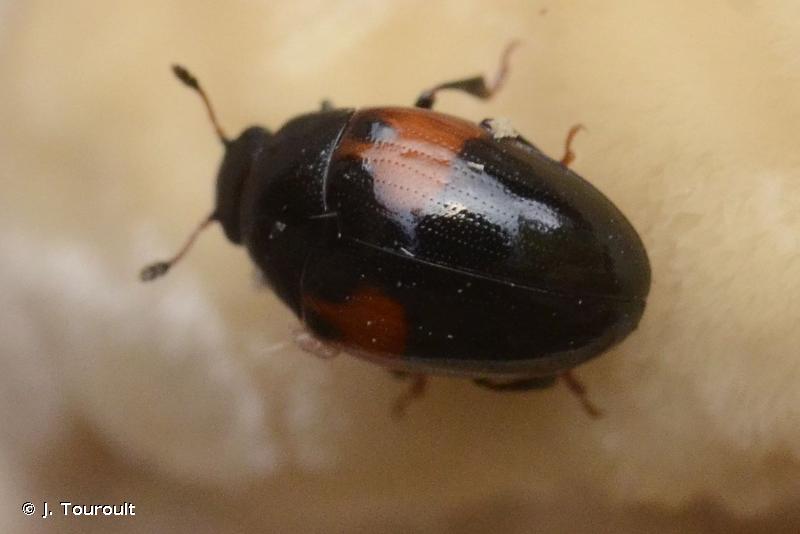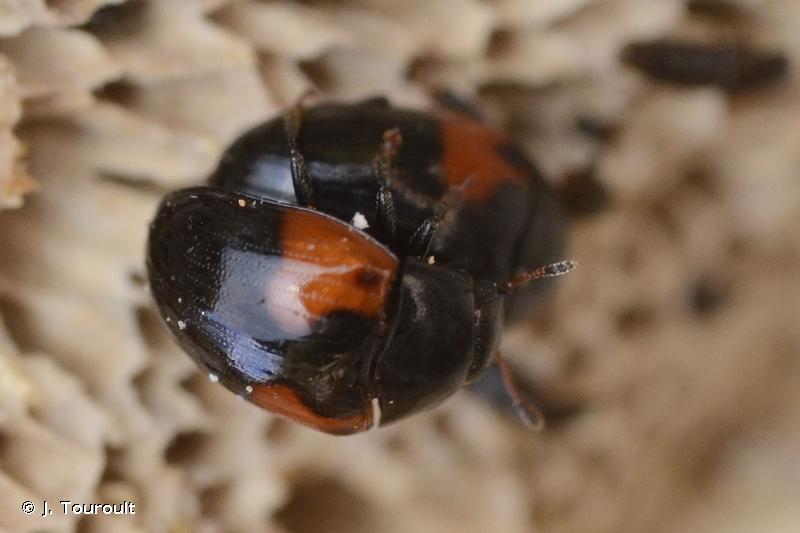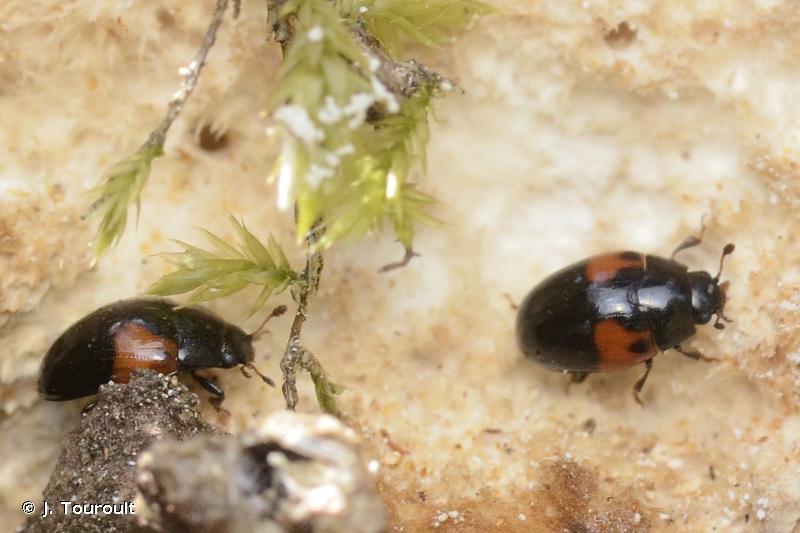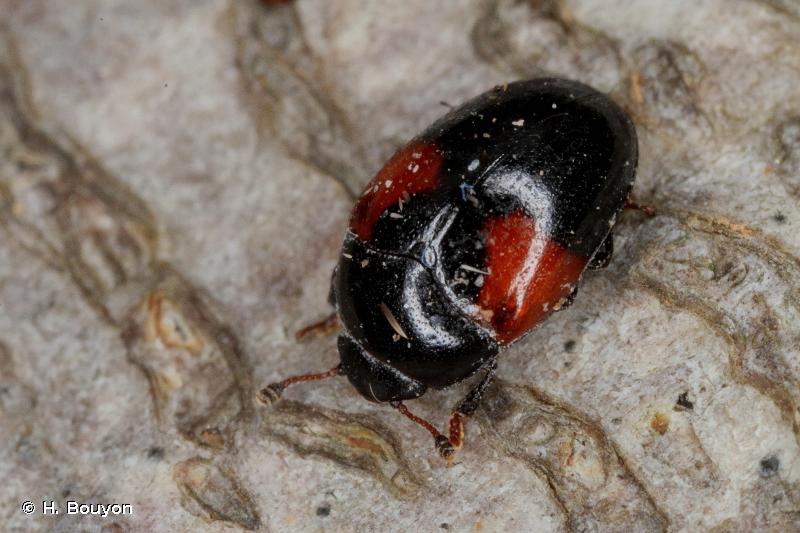
cd_nom

| Author : J. Touroult |
 |
To get the picture, please visit:
Despite the Creative Commons license, please inform the author of the use which will be made of his photo

| Author : J. Touroult |
 |
To get the picture, please visit:
Despite the Creative Commons license, please inform the author of the use which will be made of his photo

| Author : J. Touroult |
 |
To get the picture, please visit:
Despite the Creative Commons license, please inform the author of the use which will be made of his photo

| Author : H. Bouyon |
 |
To get the picture, please visit:
Any reuse of one or more photographs on this site is subject to an authorization request from the author.
Link to the Code of Intellectual Property (Legifrance)
Taille/poids :
3-4 mm
Diagnose :
Corps très convexe, en ovale court, noir brillant avec deux grosses taches humérales rouges sur les élytres. Les tarses et la base des antennes sont rouges. Face dorsale glabre, à ponctuation fine et éparse, pronotum fortement transverse à bords légèrement arrondis. Les antennes sont fines avec une massue de trois articles ronde bien marquée.
Détermination :
Assez facile.
Espèces proches :
Dacne rufifrons est plus petit et plus allongé avec les appendices entièrement rouges.
Période d'observation :
Toute l'année.
Biologie-ethologie :
Cette espèce se développe aux dépens de divers champignons arboricoles, polypores ou pleurotes.
Biogéographie et écologie :
Cette espèce est répandue dans les forêts de toute l'Europe.
Références :
Vogt H. 1967 : Clavicornia : Erotylidae. In Freude H., Harde K.W. & Lohse G.A., Die Käfer Mitteleuropas. Band 7. Krefeld, Goecke & Evers : 104-109.
H. Bouyon(ACOREP-France),2019
Continental
Metropolitan France
Overseas
Marine
Metropolitan France
Overseas
The map presents a summary at the 10 x 10 km grid of the observation data for the species transmitted to the SINP. These data have been subjected to validation filters.
The map presents a reference distribution layer of the species at the scale of departments and marine sectors. The presence and absence data were established by expertise within a network of partners. This reference distribution is used in the validation process of the SINP data at the INPN level.
Corresponds to a report on the basis of at least one observation proved within a period of 10 years (20 years for little-known invertebrates) preceding the year and no presumption of extinction since obtaining the last data nor doubt on reproductive and implemented nature of this population. For migratory species, the presence indicated concerns areas of reproduction.
This status is based on one or more of the following criteria:
This point covers the absence, more difficult by nature to demonstrate than presence. This status is based on one or more of the following criteria:
This status must be assigned to a department in which the presence of the species is casual.
Particular case of absence due to a proven extinction less than a half century ago (older disappearances are treated as "no probable or definite").
In the state of knowledge, we can not comment on the presence or absence in the current department. This is the default status when not comprised in one of the previous categories or whenever there is doubt.
The map shows the global distribution of the species based on GBIF data (Global Biodiversity Information Facility).
